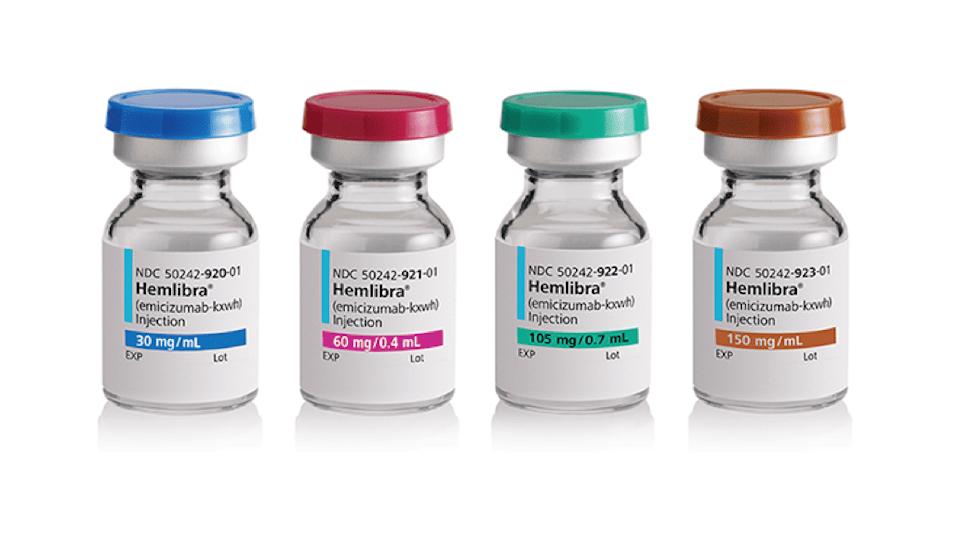Pfizer says haemophilia drug works, but safety will be key

Pfizer has reported that its anti-tissue factor pathway inhibitor marstacimab is effective at reducing bleed rates in patients with haemophilia A and B, working as well as clotting factor replacement with a simple 150 mg injection given once a week.
In the phase 3 BASIS trial, the drug achieved a “significant and clinically relevant” cut in the annualised bleeding rate (ABR) compared to prophylaxis and on-demand use of intravenously-administered clotting factors.
The results showed superiority with marstacimab compared to prophylaxis, with a 35% reduction in ABR, with a 92% reduction in bleeds versus on-demand therapy.
Pfizer said the results give marstacimab a shot at becoming the first once-weekly subcutaneous treatment for people living with haemophilia B, as well as the first treatment administered as a flat dose – i.e. not determined by weight – for people living with either haemophilia A or B. It is preparing for possible regulatory filings “in the coming months”.
Inhibiting TFPI is a new approach to treating haemophilia, avoiding the need to deliver replacement for the clotting factors deficient in the disease. TFPI is a regulating factor that interrupts the natural clotting process in the body, preventing the formation of unnecessary clots.
By blocking it, Pfizer aims to “re-establish balance between bleeding and blood clot formation,” according to the company.
That has proved to be a tricky tightrope to walk, however, as the challenges facing earlier TFPI-targeting projects reveal.
Novo Nordisk’s concizumab has been the pathfinder in this category, although its clinical development was held back by concerns about blood clots and it was recently turned down for approval by the FDA – though reportedly not for safety concerns, rather for questions about its manufacturing.
However, concizumab has been approved in Canada as Alhemo, but requires once-daily subcutaneous dosing that has some market observers questioning its commercial viability. Novo Nordisk insists it has the potential to become a $1 billion-a-year product.
Bayer was also developing a once-weekly TFPI-targeting antibody called befovacimab, but abandoned the drug after phase 2 testing because of clotting-related side effects. Meanwhile, South Korea’s GC Pharma also has a candidate codenamed MG113A in early-stage clinical testing.
For its part, Pfizer said the safety profile of marstacimab was consistent with earlier studies of the drug, with “no thromboembolic events or events of consumptive coagulopathy recorded” in its studies to date.
If Pfizer can demonstrate acceptable safety, the potential rewards could be huge. There is already a precedent in haemophilia A with Roche’s Hemlibra (emicizumab), a non-clotting factor therapy that has rocketed to more than $4 billion in sales, thanks to its ease of administration compared to Factor VIII replacement therapy and approval for use in patients who have developed inhibitors (antibodies that can reduce the activity of clotting factor replacement therapies).
So far, the BASIS trial has only reported results in patients without inhibitors, but it does include a cohort of patients with inhibitors, and data from that is expected next year.
The FDA awarded Pfizer breakthrough status for marstacimab in 2019 for routine prophylaxis to prevent or reduce the frequency of bleeding episodes in haemophilia A with inhibitors or haemophilia B with inhibitors.
Image by Arek Socha from Pixabay.













